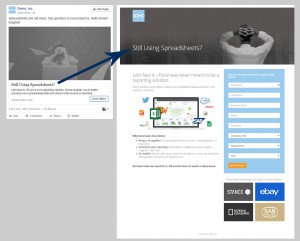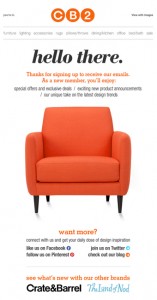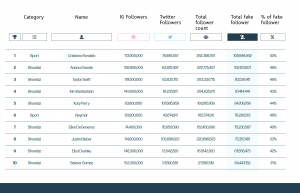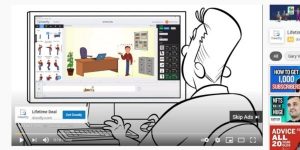— October 22, 2018
In the B2B space, we can sometimes get lost looking for the newest shiny objects and forget about the basics of digital marketing. Don’t let that happen to email. There’s a reason it’s tried and true – it still holds the highest ROI.
It’s time to go back to the basics.
The Basics of Email Marketing
For most B2B organizations, email is used in every aspect of their business. Your sales guys send emails. Your marketing team sends emails. Your customer service team sends emails. For most organizations, email is the number one touchpoint for communicating with customers. Your customers likely receive more email from you than they ever receive phone calls or in-person visits. So, the content and context of your email marketing should never be taken lightly.
That said: why do we think about email so little in our organization? We’re going to dive into three areas of our business to determine how to best use email to reach our goals.
Sales Team Emails
As I mentioned, your sales team should be sending a lot of email. The reason they do this is because with the advent of email marketing and CRM integration, you should be able to send a lot of emails that cut down a lot of time and increase productivity. But we still get asked this question often: “What kind of emails to our sales team be sending?”
Well, it’s a good question. The reality is that email offers more of a challenge for sales guys than it does for any other department. (If you’re a sales guy, you can quote me on that.)
The reason why it’s much more difficult is that you’re expected to be both personal and automated at the same time. In other words, you need to get a lot of emails out, but it can’t be willy-nilly, because your potential customer is looking for personal attention and customization. They want to feel that you’re paying attention to them – and so does everyone else. The problem is that you’ve only got so much attention to give.
Marketing helps with this a bit, but it can’t totally fill the role of “personal attention” for the customer. Yet, without that, the prospect can feel funneled, or herded, which would detract from the impact you are trying to have.
This means that from a sales perspective, an intelligent CRM-based email marketing with high customization is an absolute requirement. If you’re sending out templated emails but you are not using a system like HubSpot or Infusionsoft, you’re probably spending a lot of time doing it. Or, if you’re not, you’re definitely not doing it well.
If you’re just getting started, the key is to start slow and find the biggest bottleneck. Then, work to find the areas where email automation can have the biggest impact – places where it can really help you save time and increase your productivity. Create those templates first, and find easy ways to automate them. If you’re not using HubSpot Sequences, for example, this could be a real leverage point for you in the organization.
Marketing Emails
Marketing is the act of positioning your product or service within the marketplace. Advertising is the expression of that position to the targeted customer. So your goal, in a marketing context, is to continually position your firm or service within the mind of your potential customer.
When you think of a channel such as email, this could include such tactics as an email newsletters and drip campaigns, but on a bigger level, you should push thought leadership. The marketing message should focus on the unique differentiators of your firm or service within the market. This means you need to drive the value of your firm’s service every time you send an email.
So if you are a professional services firm, this positioning should include your expertise, which is really the summation of all your experiences being applied to a customer problem. Don’t just send your latest project; send some of the thinking that made your latest project successful.
The success of your communication will directly correlate to how well it helps customers solve their problems. If you’re constantly talking about yourself or your products and services without a correlation to your customer, or if you never tie in how your product or service will solve their problems, you’re just creating noise.
There are too many product and service emails that simply talk about what’s being offered without ever considering the benefits that the end customers actually care about.
For example, you may have the highest-rated service on Yelp, yet that means nothing to me if you don’t address my pain points specifically.
This is a high-level review of marketing email, but hopefully it provides direction toward where you should push.
Customer Service Emails
The communications you have with your customers over requests, service calls, or even the day-to-day management of an account are sometimes just viewed as inconsequential. But how could we leave these major touch points to chance?
What’s most important is that every email that’s sent out of your firm is thought through in terms of how it affects the customer experience.
Have you reviewed your customer service rep’s email sent box recently? Think about what kind of information you could find in there. If they’re being polite, if they address the customer concerns, if there’s terseness – frankly, there could be a whole array of challenges or wonders inside of that email box in terms of who is winning and losing accounts when it comes to customer service.
Since every firm and company is different, let’s talk about this from a conceptual standpoint. You should determine your email communication standards from a customer service perspective on day one. This could include response times, response context, and other technical standards, all the way down to the signatures and closing remarks of emails.
A good email customer service strategy may need to be broad to encompass all situations; it could also be very narrow in terms of an escalation or communication policy around particular issues. If you’re setting up a meeting, for example (which seems minor), you could have templates for emails that are sent out to make sure all the details are covered. The alternative is to just ad hoc it, sending an email saying, “Hey we got a meeting tomorrow here’s the agenda see you then..”
Yikes.
A properly thought-through strategy could include some reminders on directions and the more formalized greeting, for example.
Don’t Take Email For Granted
All this to be said, every email from your firm or your company is a piece of communication to your customer. Don’t leave it to chance.
Email should be thoughtful, purposeful, and measurable to make sure it’s having the best impact. The emails you send will be a large part of the communication experience your customer has with your firm.
Digital & Social Articles on Business 2 Community
(38)
Report Post





